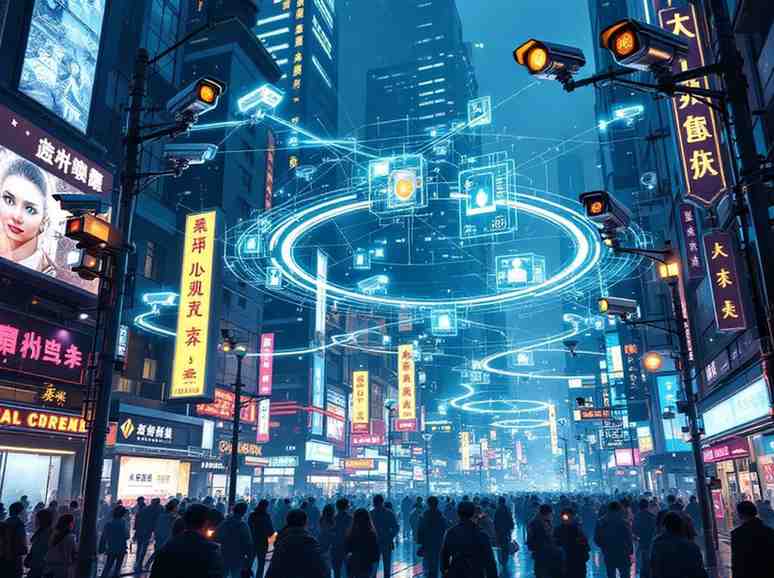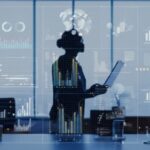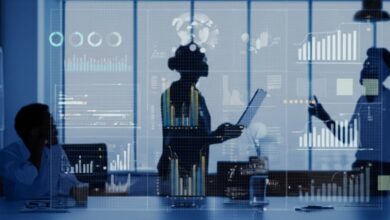
Well, I had that exact thought while watching Terminator for the hundredth time.
But then I stumbled upon something that made my popcorn go stale in my mouth.
Picture me, scrolling through research papers at 2 AM (because apparently that’s when I do my best thinking), when I discovered something mind-blowing.
China has actually named their surveillance network “Skynet.” Yes, you read that right.
The same name as the AI system that tried to wipe out humanity in those movies.
Talk about life imitating art in the most unsettling way possible!
After diving deep into the latest research on Chinese technology implementation, I’ve uncovered a comprehensive system that’s reshaping how an entire society functions.
What I found goes far beyond simple surveillance, it’s a complete reimagining of social control through artificial intelligence.
Key Takeaways
Before we dive into the details, here are the three most important things you need to know:
- China has implemented the world’s most comprehensive AI-powered social governance system, affecting over 1.4 billion people
- The technology extends beyond surveillance to actively control citizens’ access to services, travel, and opportunities
- These systems are being exported globally, potentially reshaping surveillance practices worldwide
The Social Credit System: Your Life as a Score
Imagine if your entire existence could be reduced to a number.
Sounds crazy, right?
Well, in China, that’s exactly what’s happening.
The Social Credit System uses AI and big data to assign scores to citizens based on their behavior, finances, and compliance with government rules.
Think of it like a credit score, but instead of just affecting your ability to get a loan, it determines whether you can travel, where your kids go to school, and even what jobs you can get.
Here’s how it works in practice:
- Pay your bills on time? Score goes up
- Jaywalk across the street? Score goes down
- Post something the government doesn’t like? Major points deducted
- Help an elderly person? Points added
According to a 2019 study published in the China Quarterly, over 13 million people have been banned from buying airline tickets, and 5 million have been blocked from purchasing high-speed train tickets due to low social credit scores.
The system is both fascinating and terrifying.
Citizens can check their scores through government apps, just like checking their bank balance.
But unlike a bank account, your social credit affects every aspect of your daily life.
Skynet: The All-Seeing Eye
When I first learned that China actually calls their surveillance network “Skynet,” I thought someone was pulling my leg. But it’s absolutely real, and the scope is staggering.
The official name in Chinese is “Tianwang” (天网), which translates to “heavenly net.” The government launched it in 2005, but the expansion since then has been nothing short of remarkable.
The Numbers Behind the Network
Let me break down what “comprehensive surveillance” actually means:
| Surveillance Component | Scale |
|---|---|
| Security cameras | Over 700 million |
| Recognition types | Facial, gait, voice |
| Coverage | All major public spaces |
| Real-time capability | Individual identification in seconds |
The system doesn’t just record, it analyzes.
Advanced AI algorithms can identify individuals even when they’re wearing masks or trying to disguise their appearance.
Gait recognition technology means you can be identified by how you walk, even from behind.
How Skynet Actually Works
Walking through a Chinese city today is like living in a science fiction movie. Cameras equipped with facial recognition technology track your movements from the moment you step outside. The AI systems can:
- Identify you within seconds of appearing on camera
- Track your path through the city
- Flag unusual behavior patterns
- Send alerts to authorities in real-time
A 2020 study from the Journal of Strategic Studies found that these systems have achieved accuracy rates of over 95% in identifying individuals under optimal conditions.
Digital Identity: Your Body as Your Password
China has taken digital identification to a whole new level.
The integration of biometric data with digital IDs creates what researchers call a “comprehensive identity ecosystem.”
Biometric Integration
Your face, iris patterns, and fingerprints are all linked to your digital identity.
This means:
- Online activities are tied to your real identity
- Anonymous internet use becomes virtually impossible
- Real-name registration is enforced across all platforms
- Physical and digital worlds merge completely
The government requires real-name verification for everything from social media accounts to buying train tickets.
You can’t hide behind usernames or pseudonyms, everything traces back to your biometric signature.
AI Social Media Monitoring: Watching Every Word
Social media monitoring in China goes far beyond what most people imagine.
Natural Language Processing (NLP) and AI systems continuously scan online content for anything the government considers problematic.
What Gets Flagged
The AI systems look for:
- Political dissent or criticism
- Discussion of sensitive topics
- Coordination of protests or gatherings
- Spreading of “rumors” or unverified information
Starting in 2025, new regulations require all AI-generated content to be clearly labeled.
This creates an interesting paradox where AI is being used to monitor content while simultaneously being regulated itself.
The psychological impact cannot be understated.
When people know they’re being watched, they change their behavior.
Social scientists call this the “chilling effect,” and it’s happening on a massive scale.
Smart Cities: Urban Life Under AI Control
China’s Smart City initiative takes urban monitoring to unprecedented levels.
With over 250 data centers powered by IoT devices, 5G networks, and AI analytics, Chinese cities have become living laboratories for social control.
How Smart Cities Monitor Behavior
Urban AI systems can:
- Track movement patterns throughout the city
- Identify violations in real-time
- Issue fines automatically through digital currency systems
- Coordinate responses across multiple agencies
The integration is seamless and often invisible to residents.
Traffic violations, littering, or even playing music too loudly can result in automatic fines deducted from digital wallets.
The Technology Stack
Smart cities rely on several interconnected technologies:
- IoT Sensors: Monitoring air quality, noise levels, and foot traffic
- 5G Networks: Enabling real-time data transmission
- Edge Computing: Processing data locally for faster responses
- AI Analytics: Identifying patterns and anomalies
Global Implications: Exporting Surveillance
Perhaps most concerning is China’s active export of surveillance technology to other countries.
According to research from the Center for Strategic and International Studies, Chinese companies have sold AI and facial recognition systems to over 60 countries.
Countries Using Chinese Surveillance Tech
Many authoritarian regimes have adopted similar systems:
- Ecuador: Installed thousands of Chinese cameras
- Zimbabwe: Implemented facial recognition systems
- Venezuela: Uses Chinese technology for citizen monitoring
- Pakistan: Deployed AI surveillance in major cities
The global spread of these technologies raises important questions about privacy, human rights, and the future of democratic societies.
The Human Impact: Life Under Constant Surveillance
Living under such comprehensive surveillance creates unique psychological and social pressures.
Citizens report feeling constantly watched and judged, leading to self-censorship and behavioral modification.
Behavioral Changes
People adapt their behavior in various ways:
- Avoiding certain topics in conversation
- Being more careful about online activities
- Conforming to perceived social expectations
- Limiting association with “problematic” individuals
The long-term effects on Chinese society are still unfolding, but early research suggests significant changes in how people interact with each other and their government.
Resistance and Adaptation
Despite the comprehensive nature of these systems, some citizens find ways to adapt or resist.
From using VPNs to access blocked content to developing coded language for sensitive topics, human creativity finds ways to work around technological constraints.
However, the systems continue to evolve and close these loopholes, creating an ongoing cat-and-mouse game between surveillance technology and human ingenuity.
Final Thoughts
China has created something unprecedented in human history, a society where artificial intelligence doesn’t just assist government, but actively shapes how people live their daily lives.
The technology itself is impressive from a purely technical standpoint.
The ability to monitor, analyze, and respond to the behavior of over a billion people in real-time represents a remarkable achievement in data processing and AI development.
Yet the implications extend far beyond China’s borders.
As these technologies spread globally and become more sophisticated, we all need to grapple with fundamental questions about privacy, freedom, and the role of AI in society.
What strikes me most is how normal this has become for many Chinese citizens.
When surveillance is comprehensive and consistent, it becomes part of the background of daily life.
People adapt, adjust, and find ways to live within the system.
The question facing the rest of the world is whether we want to learn from China’s experience to build better protections for privacy and human rights, or whether we’ll slowly drift toward similar systems ourselves.
The technology exists, but the only question is how we choose to use it.






